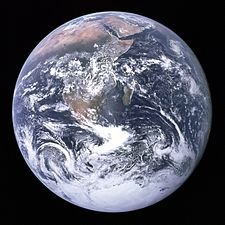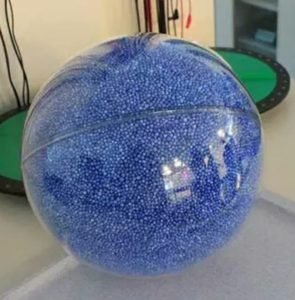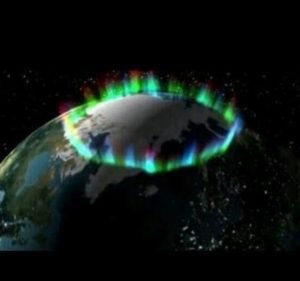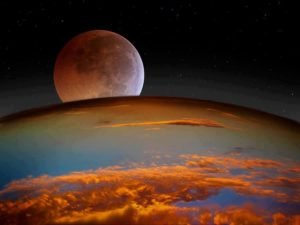
Awe-inspiring Earth Notes:
Age = 4.5 billion years old
Diameter = 8,000 miles
Weight = 6.6 sextillion tons
Circumference = 23,627 miles
Distance from sun = 92,897,000 miles
Travels 583,400,000 miles to circle the sun.
Travels at a speed of 65,868,000 mph around the sun through the galaxy.
The solar system travels 45,000 mph through the Milky Way Galaxy.
How is the earth like a loaf of bread? It has a crust. How is the earth like a birthday cake? It has layers.
Our earth is 41/2 billion years old. Earth, sometimes called the water planet or the blue planet, is a big rock of iron and some nickel. It’s called the water planet or blue planet because ¾ of the surface of the earth is covered by water and it looks pretty blue from the moon. The earth is like a big magnet, the 3rd from the sun of nine planets spinning around the sun. A star with planets is called a solar system. Our solar system is in the Milky Way galaxy, a spiral galaxy and part of a cluster of galaxies. There are many galaxies in the universe. They cluster together to make super cluster chains!
Our earth is like a layered birthday cake all decorated with life! There are 4 layers of the earth; the inner core, outer core, mantle and crust. The crust is mostly oxygen and our bodies are mostly oxygen too.
Earth erupts, quakes, has tectonic plates that slide around, has an atmosphere, weather, gravity, a thunderstorm belt, a north and south pole, an equatorial belt, and seasons. There’s a global electrical current that forms the thunderstorm belt around the earth. Earth has a negative charge and the atmosphere has a positive charge. Clouds are the electrical generators. The sun is the driving force. Gravity is the pulling force. The weight of an object on earth is the force of gravity on the object.
Earth has 5 oceans: Arctic, Atlantic, Pacific, Indian, and Antarctic. 7 continents: North America, South America, Africa, Europe, Asia, Australia, and Antarctica. 7 mountain ranges: Rockies, Andes, Appalachian, Alps, Urals, Himalayas, and The Great Dividing Range.
The Pacific Ocean is the largest and deepest and there is a ring of volcanoes called “The Ring of Fire.” Water in the Pacific has two gyres( water circles going in opposite directions. Other oceans have 1 gyre) The Mid Atlantic Ridge has a huge trench and curves like a snake.
Earth spins and so do the sun and our galaxy and it makes one complete turn in a day (24 hours), takes a year to circle the sun (365days) and 26,000 years to circle the galaxy.
The hottest, driest, snowiest place is California, coldest is Alaska, wettest is Hawaii, and the windiest is New Hampshire.
MATERIALS: Model of the earth and poster showing sun and planets, spotlight, glow in the dark stars of different sizes, laminated cards showing stars of the constellations, large laminated pictures of sun and planets to put in order and for games. Instrument showing planets spin faster the closer to the sun (Easy to make: empty pen cartridge and thread cord through it, attach ball to one end of cord and small handle to other end. Leave enough cord to pull ball in showing how it speeds up – Twirl around holding pen end and then pull cord bringing it to the center and speeding it up).
ACTIVITIES: Teach song “I’m the Earth”. Put planets in order from the sun. Do planet activity sheet. Kids pick a constellation, count out their stars and create it on the wall with the “glow in the dark” stars of different sizes. They can stick them up with that sticky clay.
A visualization of how many earths would fit into the sun.
Northern lights as seen by NASA

Use the work sheet below for kids to color the planets and then cut them out and put in the right order from the sun.

GLOW IN THE DARK STARS SUPERPAK
